Reflections on Driving in Japan
Posted on Jul 21, 2022 in Editorials | 2 comments
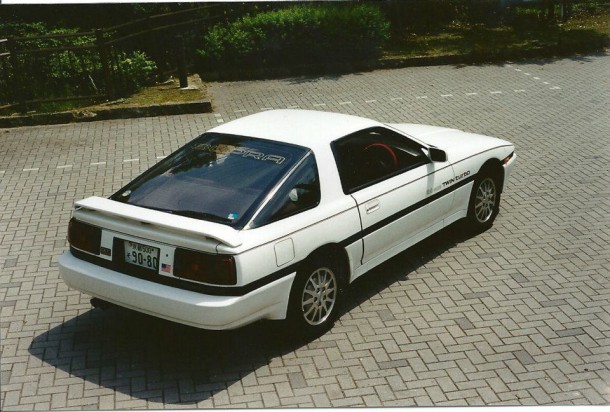
A few weeks ago, one of Best and Brightest asked for my thoughts on driving in Japan. It’s not the first time the topic has come up. There were several comments in response to the series that documented the importation of my Town & Country, but I’ve been content to avoid the subject up ’til now.
I’d like to say I’ve abstained explaining driving in Japan because I believe my silence fosters discussion. But there’s a truer reason: I dread the scrutiny that follows any article about Japan. I know from hard experience that every westerner who has ever set foot in the country is an expert on every subject, and they will come out of the woodwork to dispute everything I say.
Don’t believe me? Wait and see.
I should probably begin by listing my bona-fides. I took up permanent residence in Japan in the spring of 1999. I bought a motorcycle less than a month after I landed and spent more money on a 2.0-liter twin-turbo Supra a couple of months later. I used them almost every day until I returned to the U.S. late in 2001.
The summer of 2003 found me back in Japan with a U.S. market, left-hand-drive Volkswagen Golf. I used the car mostly on the weekends. To supplement my time on the road, I also took on the role of designated driver for the Mitsubishi Delica my employer used as an employee shuttle. Life happened and I picked up a Suzuki GSXR 1100, then a Japanese Domestic Market Mazda MPV after moving to Okinawa in 2006. By the time I returned home in the summer of 2009, I had built up a record of almost six years of daily, accident free driving. The rest you probably know: After 5 years stateside, the family and I returned to Japan in July 2015. We bought our Honda Mobilio about two weeks after that, and the Town & Country arrived ashore in September.
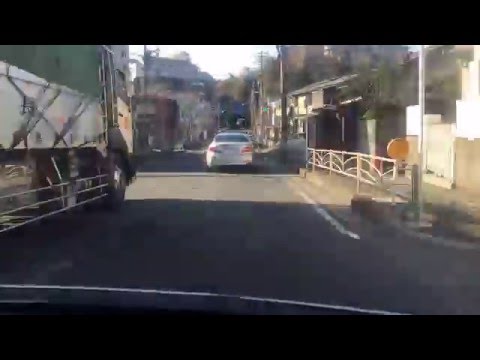
I am not a trained driving instructor, but I have given the subject a great deal of thought over the years. New drivers, I think, face two challenges. The first is the learning equipment: understanding the controls and the ways in which a vehicle responds when you hit the gas or push on the brake pedal. We all had to learn these when we first started, but they become so familiar to us over time that it’s easy to forget where we began. If you think back to the first time you behind a wheel, however, you can remember how odd it felt. It’s almost exactly the same when you switch from left-hand to right-hand drive.
Some things are the same of course: pedal placement, shift patterns, the feel of the car as you accelerate and brake. Other things are slightly different, such as the location of the blinker stalk and other controls. Each of these difference takes some time and attention to wrap your head around. While you remain focused on them, you are vulnerable.

That’s because, while you are working to master basic vehicle operation, you must also face the second challenge: mastering defensive driving. You can, of course, learn the basics of traffic law by studying an English translation of the Japanese driving manual, but it takes time to learn the ins-and-outs of daily driving. Until this becomes second nature, there can be no “autopilot.” You can’t take a moment to fiddle with the radio or unwrap a piece of candy. You have to stay focused and have your head in the game at all times. That’s damn difficult.
Over the years, I’ve used different tricks to focus on the task at hand and foot. I started by performing certain exercises that coaches teach to get you into the game: I visualized success, practiced the motions and did a lot of “pretending.” I’ve made it a habit to walk like I drive, along the left side of the sidewalk with special attention to forcing myself to think about moving to the left when I rounded street corners. I watch what cars do while I walk and, on those few occasions where I ride with someone else, try to read the traffic as though I’m the driver. These are baby steps. But when you think back to when you were a teen learning to drive, you will realize you probably did similar mental and physical training routines. They actually work.
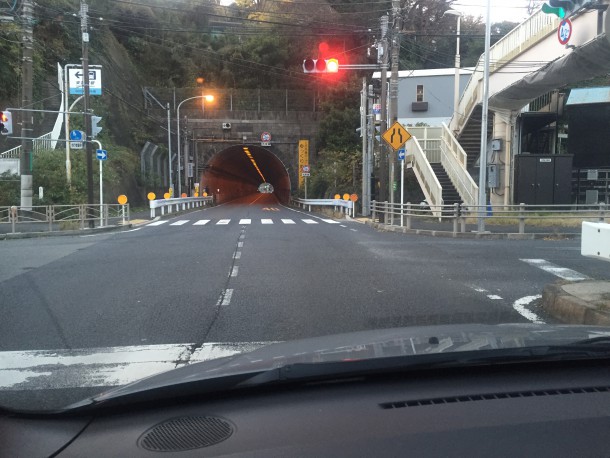
Reading the road is especially important, and I’ve come to believe that driving safely in Japan requires one to focus more than on just what lies ahead. You need to have almost 360-degree awareness. You need to watch for parked cars in your own lane and the opposite lane because a stopped vehicle might cause an oncoming car to drive into your lane. Japanese drivers think nothing of squeezing over, and you can damn well bet that they will intrude into your lane fully expecting you’ll yield.
You also need to watch for scooters and motorcycles coming up from behind and try not to make any sudden stops or moves while they’re around. They get incredibly close, and I have been told the Japanese police will generally fault the driver of the car in the event of a collision. Also, you need to leave enough space for bikes to get through when you stop at a signal. I suppose, technically, you don’t have to, but you learn that a few extra inches will spare the sides of your car after watching cyclists squeeze by again and again. Leaving a gap is cheap insurance and it only takes a second of your time.
The roads, too, are a challenge. While I have come to the conclusion that the lanes are essentially the same size as the ones we have in the U.S,, runoff in Japan is more limited. There simply is no margin for error. If you drift too far to the left, you are on the curb or up against a guardrail. If you drift too far to the right, you are in oncoming traffic. That makes knowing exactly where you are on the road incredibly important. My own personal trick is to aim the mirrors a little lower than usual so I can see markings on the roadway stream out behind the car. Of course, I sacrifice the ability to see very far behind me, but the speeds here are low and, like everything, you eventually get used to it.
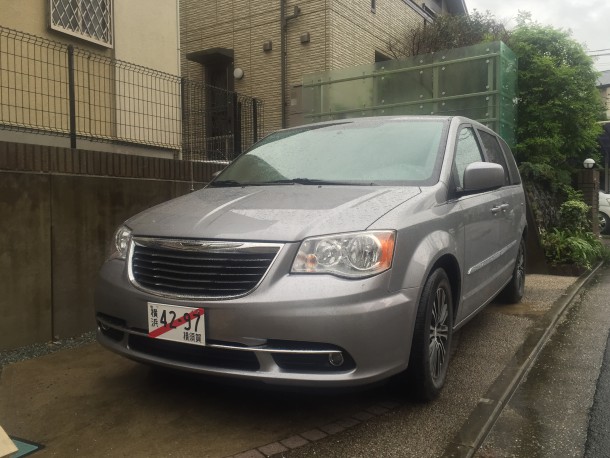
Once you master these aspects, driving in Japan is not crazy hard. The Town & Country is a little wider but is not much bigger than many other vehicles on the Japanese roads. Other than tracking the activities of the cars, bikes and people around me, my greatest concern is ensuring that I have pulled far enough forward that I don’t clip a wall or pole when I make a sharp turn into a narrow alley. My trick for lane positioning applies to turn-ins, too, and relies upon the side mirror. I just pull ahead and watch the object while I turn making adjustments as I go. It’s not hard and I think it must be similar to what gets taught in trucking school. There’s a reason why mirrors on big rigs are so large; they use them all the time.
Beyond that, I try not to get stressed out over my personal space, which tends to be magnified when another person gets behind the wheel. And I try not to worry about scratches or dings; they’re bound to happen in any tight, urban environment, so it’s better to not sweat them. I also do my best to quash my aggressive tendencies, like the impulse to slam the door on someone who I know is working their way into a position to cut in front of me. I’ve come to realize that it just doesn’t matter. We’re all going to end up at a stoplight together a block down the road, so slow and easy have become my watchwords. The last thing I want to do is kill or injure someone. That’s probably pretty good advice no matter where you drive, come to think of it. It’s a lesson you don’t need to cross the date line to learn, just be nice out there and you’ll do well no matter where you live.
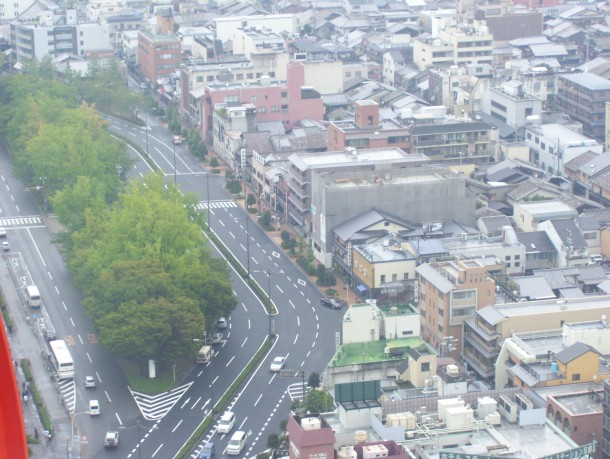





.gif)


When I drove in Australia for the first time I felt completely clueless. It’s very humbling. The turn signal definitely was the hardest thing to get used too. By the end of day two I started to feel comfortable, but other than the side of the road, Australian roads are more similar to US roads than Japan. I would have to be very careful and probably start somewhere in the country.
Yes they are similar to the US roads